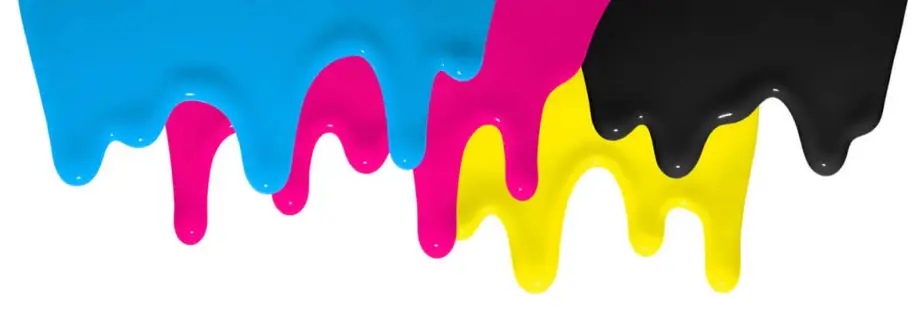Design FX Studio offers comprehensive print management services to clients – and my role is to choose the right print technique for any given project. One of the most common questions I get asked is: what’s the difference between digital and litho print techniques, and when should I choose one over the other?
To make the decision easier for my clients – and to clear up a few misconceptions – I’ve gone into more detail about these popular printing methods here.
Litho print
Litho printing uses wet ink and printing plates to transfer an image onto paper. Litho printers will typically use the four colour process during production, which requires that the artwork is separated onto four different printing plates: cyan, magenta, yellow and black. You’ll often see these groupings abbreviated to CMYK for ease. Once combined, these four tones will come together to create your full colour image.
That said, though, most litho printing houses also work with Pantone ink, giving you even more colour choices and access to spot colours that sit within the standardised Pantone Matching System.
Your printer will need to set up your custom plates before the print run can begin, so be prepared to pay an initial labour cost. However, once the plates have been developed to your satisfaction and are in register, you can expect to pay less per copy than if you were to go down the digital route.
It’s also possible to only use two colours (and therefore two plates) instead of four, which will bring the price of the print job down.
Special, metallic and spot inks can be incorporated into your print design to make it pop off the page, too, while UV varnishing can be used to add durability to your printed materials.
Choose litho printing if:
- You want materials with a top-quality finish
- You’re investing in large quantities of the same print
- You want to create a lot of materials quickly
- You’re incorporating large blocks of colour into your design and want to achieve graphics that are smooth and non-pixelated
- You want to print onto unusual stock – for example, textured, glossy or coloured paper
- You wish to print onto thicker paper – litho presses can cope with thicknesses of up to 500gsm
- You don’t require a fast turnaround – it can take several days for the ink to dry thoroughly
- You’re looking for hard-wearing print materials
- Cost isn’t so much of an issue!
Digital print
It was a technique that was once associated with lower-spec projects and budget print runs – but digital printing technology has come on in leaps and bounds in the last few years. Now, clients can often get their hands on top quality materials without the higher quotes and longer wait-times associated with litho printing.
As the name suggests, digital printing uses electronic files and dots of colour to create the desired image. Once the printer has picked up ‘instructions’ from, say, a PDF file, it will print the graphics onto the surface of the paper using toner or ink.
Choose digital printing if:
- You need a shorter run length
- You need a quick turnaround
- You want to print onto simple, untreated materials
- You’re happy to work with thinner paper weights (up to 300gsm)
- You need to create print personalised materials – for example, leaflets or flyers addressed to specific customers
- You’re not using metallic inks within your print designs
- You don’t want to varnish the finished products
- You want to keep printing costs to a minimum
So in summary, if you’re looking for premium quality, heavy-duty prints with specific features, you don’t mind waiting a few days to receive your prints, and you’re happy to spend a little more money upfront, litho printing is the perfect option.
If you need a smaller volume of products, you’re not looking to add any off-beat inks into your designs, and you want to get a great finish at a much more competitive price, digital is definitely the way forward.
